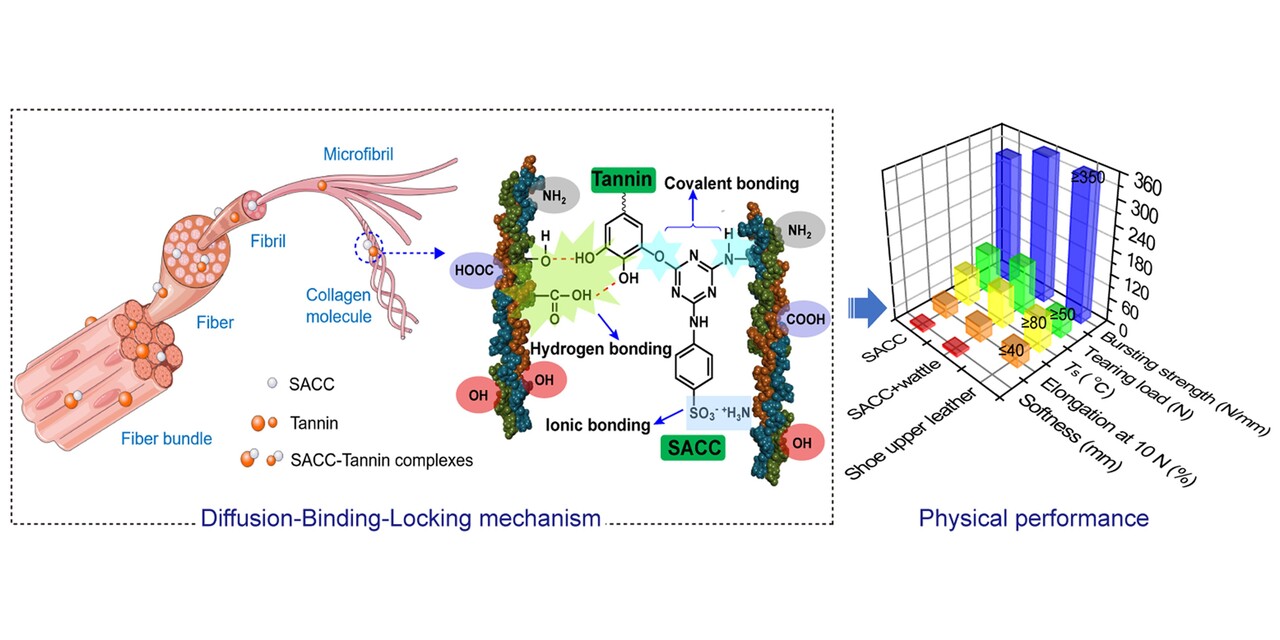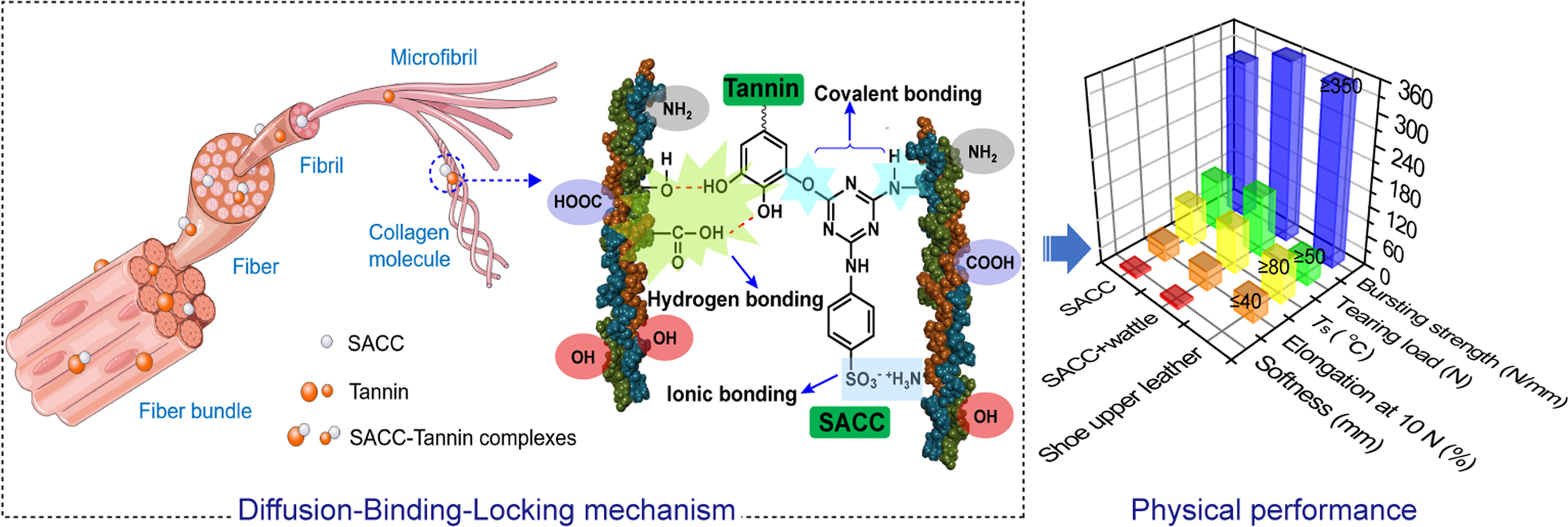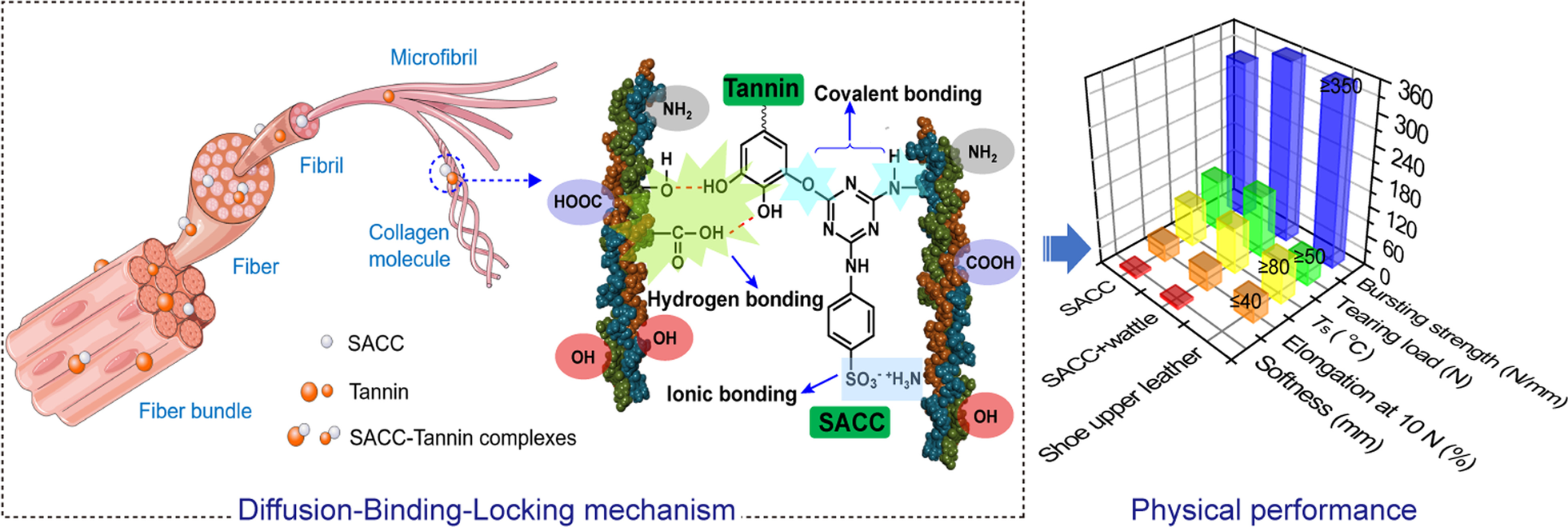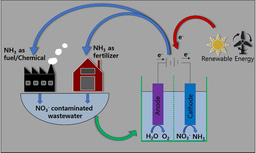Sustainable metal-free leather manufacture via synergistic effects of triazine derivative and vegetable tannins
Published in Sustainability

Abstract
Restrictions on heavy metals, especially chromium, have encouraged alternative tanning systems that can reduce environmental and human health risks from conventional chrome-based tanning. In this work, metal-free combination tanning was developed by using vegetable tannins and a triazine-based syntan containing active chlorine groups (SACC). Specifically, the relationship between leather performance (e.g., hydrothermal stability and organoleptic properties) and technical protocols (e.g., types and dose of tannins) was systematically established. The optimized protocol involving a unique procedure (i.e., 10% SACC pre-tanning, shaving, and 25% wattle tanning) endowed the leather with high shrinkage temperature (~ 92 °C) and met the Chinese standards for shoe upper leather (QB/T 1873-2010). This method not only produces zero chrome-containing solid wastes, but also uses ~ 75% less tannin for leather manufacture. The excellent leather performance was ascribed to the synergistic effects, where SACC and wattle diffused into collagen fibrils and may bind to collagen via covalent, hydrogen and ionic bonding, locking the hierarchical structure of collagen from microfibrils to fiber bundles. Moreover, the authors summarized these findings and proposed a diffusion-binding-locking mechanism, providing new insights for current tanning theory. Together with the biodegradable spent tanning liquor, this approach will underpin the development of sustainable leather manufacture.

Introduction
Tanning is the critical process in leather industry through which animal hides and skins are converted into leathers that are resistant to heat and microbial attack. Chrome tanned leather has been dominant in the tanning industry because of their excellent comprehensive properties, such as good hydrothermal stability, reliable mechanical behavior, etc. However, conventional chrome tanning generates substantial non-renewable chrome-containing wastewater and solid wastes. These unfixed Cr(III) in leather and wastewater may be oxidized to carcinogenic Cr(VI), which seriously threatens human health and environment. Therefore, various countries or regions have released stringent restrictions regarding the Cr discharge. In 2008, chrome-containing solid wastes have been listed in the “National Hazardous Waste Inventory” in China, which limits the production and circulation of chrome tanned leather. More recently, the European Union has limited the content of Cr(VI) in leather products to 3 mg/kg in 2014 (Annex XVII of REACH regulation).
The utilization of non-chrome metal materials (e.g., Al3+, Zr4+ and Ti4+) as tanning agents has been reported to coordinate and crosslink collagen fibers, but their binding strength is weaker than chrome, leading to poor leather performance. Moreover, many countries also have restricted the content of metals in leather and textiles, such as Leather Standard by Oeko-Tex (2021 version). To this end, the development of metal-free tanning materials and cleaner tanning systems is imperative. This also requires a deeper understanding of the physicochemical interactions between tanning agents and collagen at the molecular and structural levels—the crosslinking effect of tanning agents is not only related to their reactivity, but also relevant to the collagen structure, size of tanning agents, and their diffusion capacity in leather matrix.
The tanning system using environmentally friendly organic tanning agents is considered as an alternative tanning approach. One typical bio-based material is vegetable tannins from plant leaves, fruits, seeds and barks, which have molecular weights of 500–3000 Da and are classified into ester derived hydrolysable tannins (e.g., chestnut) and flavonoid derived condensed tannins (e.g., mimosa). They can penetrate and bind with collagen in multiple levels via hydrogen and hydrophobic bonds to endow the leather with good fullness, human skin compatibility and environmental friendliness. More recently, triazine derivatives as tanning agents for chrome-free leather has attracted immense interest. It mainly reacts with the side-chain amino groups of collagens to form strong covalent bonds, thus enhancing hydrothermal stability of leather. Compared with other organic tanning agents (e.g., aldehydes and syntan), triazine derivatives can effectively mitigate the health risks due to their biocompatibility. Meanwhile, the released H+ in tanning process can simultaneously reduce the tanning liquor pH from ~ 7.8 to ~ 5.0, which facilitates the tanning process (e.g., dispense with pickling) and reduces the discharge of neutral salts. In the previous work, the combination tanning system using tannic acid and triazine derivative (i.e., Granofin® Easy F-90) has been studied to overcome the poor thermal stability and storage stability of solo tanned leather. However, the restricted leather performance of such combination tannages and relatively expensive tannic acid limited their practical application. Moreover, the tanning mechanism underneath this approach lacks clear understanding from molecular level to collagen structure level.
This study reported a sustainable metal-free leather processing for eco-leather manufacture involving triazine derivative pre-tanning, shaving and vegetable tannins tanning. The types of tannins including hydrolysable tannins (i.e., chestnut, valonea and tara extracts) and flavonoid derived condensed tannins (i.e., wattle, quebracho and bayberry extracts) in this method were systematically optimized. The characteristics and environmental performance of the tanning process were also investigated. This work not only revealed the synergistic effects of triazine derivative and tannins on leather matrix, but also established a reliable novel tannage to endow the leather with required organoleptic properties and physical performance. The authors envisaged this method would produce zero chrome-containing solid wastes (i.e., eliminating the risks of heavy metals to human health and environment) and emerge as a cost-effective tanning strategy, which contributes to the cleaner production towards a sustainable development of leather manufacture.
Follow the Topic
-
Collagen and Leather

This journal focuses on new findings and scientific advances in all aspects of collagen and leather, aiming to provide a platform for both scientists and engineers to address and discuss the theoretical and practical problems encountered in leather manufacture and novel utilizations of collagen.





Please sign in or register for FREE
If you are a registered user on Research Communities by Springer Nature, please sign in